#detection
Explore tagged Tumblr posts
Text
I think my fyp is trying to yell me something..


35 notes
·
View notes
Note

Maybe I should be concerned


21 notes
·
View notes
Text
The *AI Image Detector (KI-Bild-Detektor)* as an extension for the Chrome browser for recognizing and explaining image content and for detecting AI-generated images.
12 notes
·
View notes
Text

jasper my beloved
(they are a minor pls don't be weird <3)
#wip#sketch#art#oc#queer artist#digital art#yippie yippie yippie#jasper is currently my favorite little meow meow#even though they're just a side character#but idk they're fun and i like to dress them up in little outfits like a fashion doll#detection#detection jasper#jasper detection#lgbtq artist#lgbtq characters#artist#artists of tumblr#drawing#reference#ref sheet#reference sheet
6 notes
·
View notes
Text
Researchers detect a new molecule in space
New Post has been published on https://thedigitalinsider.com/researchers-detect-a-new-molecule-in-space/
Researchers detect a new molecule in space
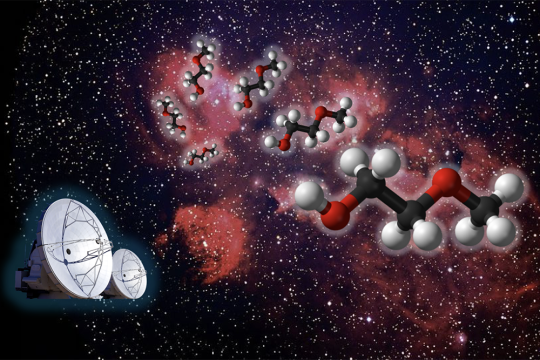

New research from the group of MIT Professor Brett McGuire has revealed the presence of a previously unknown molecule in space. The team’s open-access paper, “Rotational Spectrum and First Interstellar Detection of 2-Methoxyethanol Using ALMA Observations of NGC 6334I,” appears in April 12 issue of The Astrophysical Journal Letters.
Zachary T.P. Fried, a graduate student in the McGuire group and the lead author of the publication, worked to assemble a puzzle comprised of pieces collected from across the globe, extending beyond MIT to France, Florida, Virginia, and Copenhagen, to achieve this exciting discovery.
“Our group tries to understand what molecules are present in regions of space where stars and solar systems will eventually take shape,” explains Fried. “This allows us to piece together how chemistry evolves alongside the process of star and planet formation. We do this by looking at the rotational spectra of molecules, the unique patterns of light they give off as they tumble end-over-end in space. These patterns are fingerprints (barcodes) for molecules. To detect new molecules in space, we first must have an idea of what molecule we want to look for, then we can record its spectrum in the lab here on Earth, and then finally we look for that spectrum in space using telescopes.”
Searching for molecules in space
The McGuire Group has recently begun to utilize machine learning to suggest good target molecules to search for. In 2023, one of these machine learning models suggested the researchers target a molecule known as 2-methoxyethanol.
“There are a number of ‘methoxy’ molecules in space, like dimethyl ether, methoxymethanol, ethyl methyl ether, and methyl formate, but 2-methoxyethanol would be the largest and most complex ever seen,” says Fried. To detect this molecule using radiotelescope observations, the group first needed to measure and analyze its rotational spectrum on Earth. The researchers combined experiments from the University of Lille (Lille, France), the New College of Florida (Sarasota, Florida), and the McGuire lab at MIT to measure this spectrum over a broadband region of frequencies ranging from the microwave to sub-millimeter wave regimes (approximately 8 to 500 gigahertz).
The data gleaned from these measurements permitted a search for the molecule using Atacama Large Millimeter/submillimeter Array (ALMA) observations toward two separate star-forming regions: NGC 6334I and IRAS 16293-2422B. Members of the McGuire group analyzed these telescope observations alongside researchers at the National Radio Astronomy Observatory (Charlottesville, Virginia) and the University of Copenhagen, Denmark.
“Ultimately, we observed 25 rotational lines of 2-methoxyethanol that lined up with the molecular signal observed toward NGC 6334I (the barcode matched!), thus resulting in a secure detection of 2-methoxyethanol in this source,” says Fried. “This allowed us to then derive physical parameters of the molecule toward NGC 6334I, such as its abundance and excitation temperature. It also enabled an investigation of the possible chemical formation pathways from known interstellar precursors.”
Looking forward
Molecular discoveries like this one help the researchers to better understand the development of molecular complexity in space during the star formation process. 2-methoxyethanol, which contains 13 atoms, is quite large for interstellar standards — as of 2021, only six species larger than 13 atoms were detected outside the solar system, many by McGuire’s group, and all of them existing as ringed structures.
“Continued observations of large molecules and subsequent derivations of their abundances allows us to advance our knowledge of how efficiently large molecules can form and by which specific reactions they may be produced,” says Fried. “Additionally, since we detected this molecule in NGC 6334I but not in IRAS 16293-2422B, we were presented with a unique opportunity to look into how the differing physical conditions of these two sources may be affecting the chemistry that can occur.”
#2023#ALMA#Astronomy#Astrophysics#atoms#chemical#chemistry#college#complexity#data#Denmark#detection#development#Discoveries#earth#ether#fingerprints#form#France#how#interstellar#it#learning#Light#Machine Learning#measure#measurements#members#mit#molecules
31 notes
·
View notes
Link
Astronomy Daily - The Podcast: S04E32 In this episode of Astronomy Daily, host Anna explores a range of captivating developments from the cosmic frontier, featuring groundbreaking research on life detection methods, seismic discoveries on Mars, and the celebration of Pluto's discovery. Join us as we dive into the latest astronomical news and insights that are reshaping our understanding of the universe. Highlights: - Revolutionary Life Detection Method: Discover a new and simple technique developed by researchers in Germany to detect microorganisms' movement towards chemicals, potentially transforming our search for extraterrestrial life on planets like Mars and Europa. - Mars Seismic Highway: Learn about the groundbreaking discovery of a 'seismic highway' on Mars, revealing how seismic waves travel deeper than previously thought, reshaping our understanding of the Martian interior and planetary evolution. - Celebrating Pluto's Discovery: Get the details on the upcoming Weinhardt Pluto Festival at Lowell Observatory, honoring Clyde Tombaugh's historic discovery of Pluto and the 10th anniversary of NASA's New Horizons mission. - Gaia 4B Exoplanet Discovery: Explore the remarkable findings of Gaia 4B, one of the largest exoplanets discovered, and the intriguing questions it raises about the nature of planets and failed stars. - The Enormous Quipu Structure: Uncover the discovery of Quipu, the largest cosmic structure ever observed, and its implications for our understanding of the universe's architecture and the distribution of matter. - NASA's First Live Twitch Stream: Hear about NASA's historic live Twitch stream from the International Space Station, aimed at engaging new audiences and inspiring the next generation of space explorers. For more cosmic updates, visit our website at astronomydaily.io. Join our community on social media by searching for #AstroDailyPod on Facebook, X, YouTubeMusic, Tumblr, and TikTok. Don't forget to subscribe to the podcast on Apple Podcasts, Spotify, iHeartRadio, or wherever you get your podcasts. Thank you for tuning in. This is Anna signing off. Until next time, keep looking up and stay curious about the wonders of our universe. 00:00 - Welcome back to Astronomy Daily 01:02 - New life detection method using chemotaxis 05:30 - Insights from Mars' seismic highway discovery 10:15 - Upcoming Weinhardt Pluto Festival details 14:00 - Discovery of Gaia 4B exoplanet 18:20 - Quipu: the largest cosmic structure discovered 22:00 - NASA's first live Twitch stream from the ISS 25:00 - Conclusion and upcoming content ✍️ Episode References Life Detection Method Research [Life Detection Method](https://www.scientificreports.com) Mars Seismic Study [Mars Seismic Study](https://www.nasa.gov/insight) Weinhardt Pluto Festival [Weinhardt Pluto Festival](https://www.lowell.edu) Gaia 4B Discovery [Gaia 4B](https://www.esa.int/Science_Exploration/Gaia) Quipu Structure [Quipu Structure](https://www.astrobiology.com) NASA Twitch Stream [NASA Twitch Stream](https://www.nasa.gov/live) Astronomy Daily [Astronomy Daily](http://www.astronomydaily.io)
#alien#astrodailypod#chemotaxis#detection#exploration#extraterrestrial#festival#horizons#insight#lander#life#lowell#mars#mission#new#observatory#on#pluto#seismic#waves
2 notes
·
View notes
Video
Lade Round Sound mirror by Robert Craig
Via Flickr:
#shingle#detection#technology#experiment#1930s#Greatstone#Lydd on Sea#lade#sound mirror#dungeness#Romney Marsh#Kent#English Channel#England#flickr
11 notes
·
View notes
Note
detect this, fucker!!!!!!!!! >:3
-sincerely, @rat-detector-seven

There is, in fact, a rat detector 7 in this ask
2 notes
·
View notes
Text
Many physicists strongly believe that there is yet a third kind of field, one that has never been experimentally detected but that over the last couple of decades has played a pivotal role both in modern cosmological thought and in elementary particle physics.
"The Fabric of the Cosmos" - Brian Greene
#book quote#the fabric of the cosmos#brian greene#nonfiction#physics#field#secret third option#experiments#detection#passage of time#particle physics#cosmology
5 notes
·
View notes
Text
And indeed, the long-range influences arising from collapsing probability waves change the prediction of how often Aspect's left and right detectors (when their axes are randomly and independently chosen) should find the same result. A mathematical calculation is required to get the exact answer (see notes section¹⁸ if you're interested), but when the math is done, it predicts that the detectors should agree precisely 50 percent of the time (rather than predicting agreement more than 50 percent of the time – the result, as we've seen, found using EPR's hypothesis of a local universe).
18. For the mathematically inclined reader, here is the quantum mechanical calculation that makes predictions in agreement with these experiments. Assume that the axes along which the detectors measure spin are vertical and 120 degrees clockwise and counterclockwise from vertical (like noon, four o'clock, and eight o'clock on two clocks, one for each detector, that are facing each other) and consider, for argument's sake, two electrons emerging back to back and heading toward these detectors in the so-called singlet state. That is the state whose total spin is zero, ensuring that if one electron is found to be in the spin-up state, the other will be in the spin-down state, about a given axis, and vice versa. (Recall that for ease in the text, I've described the correlation between the electrons as ensuring that if one is spin-up so is the other, and if one is spin-down, so is the other; in point of fact, the correlation is one in which the spins point in opposite directions. To make contact with the main text, you can always imagine that the two detectors are calibrated oppositely, so that what one calls spin-up the other calls spin-down.) A standard result from elementary quantum mechanics shows that if the angle between the axes along which our two detectors measure the electron's spins is θ, then the probability that they will measure opposite spin values is cos²(θ/2). Thus, if the detector axes are aligned (θ = 0), they definitely measure opposite spin values (the analog of the detectors in the main text are always measuring the same value when set to the same direction), and if they are set at either +120° or -120°, the probably that they measure opposite spins is cos²(+120° or -120°) = ¼. Now, if the detector axes are set randomly, ⅓ of the time they will point in the same direction, and ⅔ of the time they won't. Thus, over all runs, we expect to find opposite spins (⅓)(1) + (⅔)(¼) = ½ of the time, as found by data.
You may find it odd that the assumption of locality yields a higher spin correlation (greater than 50 percent) than what we find with a standard quantum mechanics (exactly 50 percent); the long-range entanglement of quantum mechanics, you'd think, should yield a greater correlation. In fact, it does. A wat to think about it is this: With only a 50 percent correlation over all measurements, quantum mechanics yields 100 percent correlation for measurements in which the left and right detector axes are chosen to point in the same direction. In the local universe of Einstein, Podolsky, and Rosen, a greater than 55 percent correlation over all measurements is required to ensure 100 percent agreement when the same axes are chosen. Roughly, then, in a local universe, a 50 percent correlation over all measurements would entail less than a 100 percent correlation when the same axes are chosen – i.e., less of a correlation than what we find in our nonlocal quantum universe.
"The Fabric of the Cosmos" - Brian Greene
#book quotes#the fabric of the cosmos#brian greene#nonfiction#probability#prediction#alain aspect#detection#axes#left#right#math#albert einstein#boris podolsky#nathan rosen#quantum mechanics#electron
2 notes
·
View notes
Text
"By comparing the reflections in an individual’s eyeballs, Owolabi could correctly predict whether the image was a fake about 70% of the time…researchers found that the Gini index was better than the CAS system at predicting whether an image had been manipulated."
4 notes
·
View notes
Text

guys help I blacked out and now my drawing is on fire
#WHY DOES IT LOOK GOOD#art#wip#digital art#queer artist#artist#oc#detection#detection sarah#ghost#drawing#artists of tumblr
9 notes
·
View notes
Text
Dreambite by Rudok's Tavern
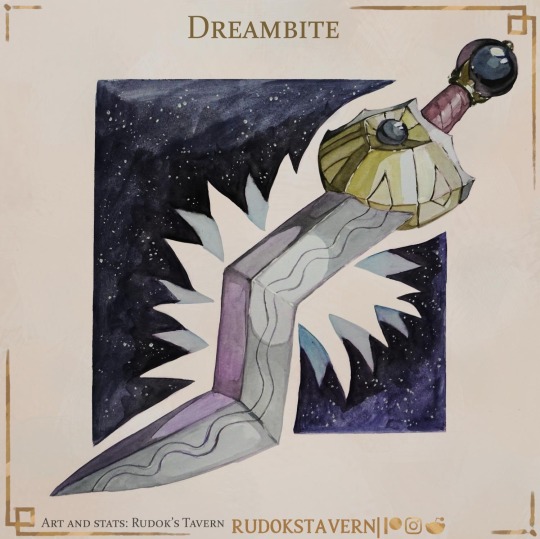
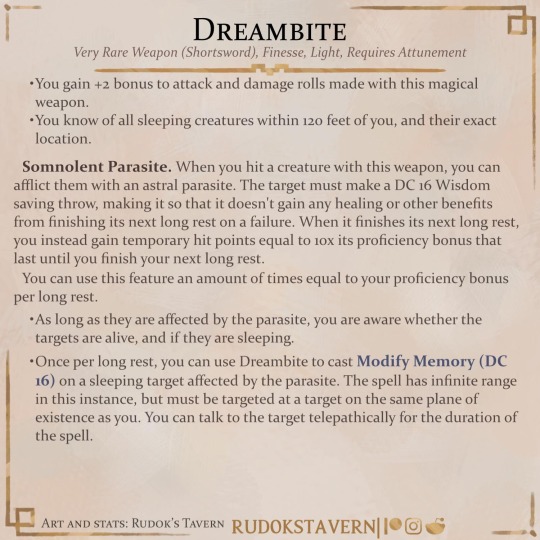
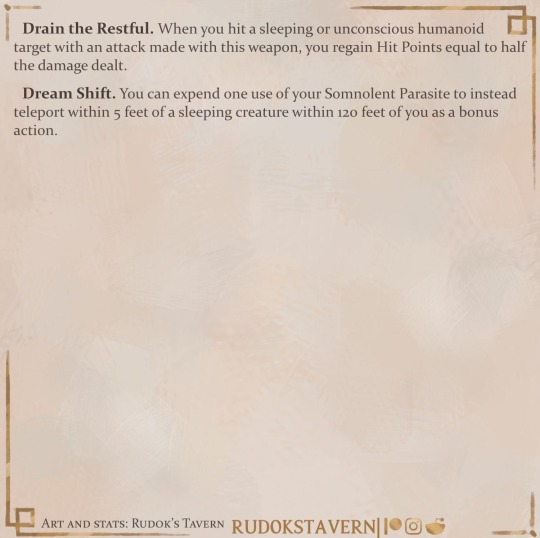

#rudok's tavern#dreambite#magic weapons#very rare#light#finesse#shortsword#sword#swords#dreams#dreaming#dark#psychic#psionic#cursing#health#healing#recovery#leeching#detection#perception
10 notes
·
View notes
Text
Moments Lab Secures $24 Million to Redefine Video Discovery With Agentic AI
New Post has been published on https://thedigitalinsider.com/moments-lab-secures-24-million-to-redefine-video-discovery-with-agentic-ai/
Moments Lab Secures $24 Million to Redefine Video Discovery With Agentic AI


Moments Lab, the AI company redefining how organizations work with video, has raised $24 million in new funding, led by Oxx with participation from Orange Ventures, Kadmos, Supernova Invest, and Elaia Partners. The investment will supercharge the company’s U.S. expansion and support continued development of its agentic AI platform — a system designed to turn massive video archives into instantly searchable and monetizable assets.
The heart of Moments Lab is MXT-2, a multimodal video-understanding AI that watches, hears, and interprets video with context-aware precision. It doesn’t just label content — it narrates it, identifying people, places, logos, and even cinematographic elements like shot types and pacing. This natural-language metadata turns hours of footage into structured, searchable intelligence, usable across creative, editorial, marketing, and monetization workflows.
But the true leap forward is the introduction of agentic AI — an autonomous system that can plan, reason, and adapt to a user’s intent. Instead of simply executing instructions, it understands prompts like “generate a highlight reel for social” and takes action: pulling scenes, suggesting titles, selecting formats, and aligning outputs with a brand’s voice or platform requirements.
“With MXT, we already index video faster than any human ever could,” said Philippe Petitpont, CEO and co-founder of Moments Lab. “But with agentic AI, we’re building the next layer — AI that acts as a teammate, doing everything from crafting rough cuts to uncovering storylines hidden deep in the archive.”
From Search to Storytelling: A Platform Built for Speed and Scale
Moments Lab is more than an indexing engine. It’s a full-stack platform that empowers media professionals to move at the speed of story. That starts with search — arguably the most painful part of working with video today.
Most production teams still rely on filenames, folders, and tribal knowledge to locate content. Moments Lab changes that with plain text search that behaves like Google for your video library. Users can simply type what they’re looking for — “CEO talking about sustainability” or “crowd cheering at sunset” — and retrieve exact clips within seconds.
Key features include:
AI video intelligence: MXT-2 doesn’t just tag content — it describes it using time-coded natural language, capturing what’s seen, heard, and implied.
Search anyone can use: Designed for accessibility, the platform allows non-technical users to search across thousands of hours of footage using everyday language.
Instant clipping and export: Once a moment is found, it can be clipped, trimmed, and exported or shared in seconds — no need for timecode handoffs or third-party tools.
Metadata-rich discovery: Filter by people, events, dates, locations, rights status, or any custom facet your workflow requires.
Quote and soundbite detection: Automatically transcribes audio and highlights the most impactful segments — perfect for interview footage and press conferences.
Content classification: Train the system to sort footage by theme, tone, or use case — from trailers to corporate reels to social clips.
Translation and multilingual support: Transcribes and translates speech, even in multilingual settings, making content globally usable.
This end-to-end functionality has made Moments Lab an indispensable partner for TV networks, sports rights holders, ad agencies, and global brands. Recent clients include Thomson Reuters, Amazon Ads, Sinclair, Hearst, and Banijay — all grappling with increasingly complex content libraries and growing demands for speed, personalization, and monetization.
Built for Integration, Trained for Precision
MXT-2 is trained on 1.5 billion+ data points, reducing hallucinations and delivering high confidence outputs that teams can rely on. Unlike proprietary AI stacks that lock metadata in unreadable formats, Moments Lab keeps everything in open text, ensuring full compatibility with downstream tools like Adobe Premiere, Final Cut Pro, Brightcove, YouTube, and enterprise MAM/CMS platforms via API or no-code integrations.
“The real power of our system is not just speed, but adaptability,” said Fred Petitpont, co-founder and CTO. “Whether you’re a broadcaster clipping sports highlights or a brand licensing footage to partners, our AI works the way your team already does — just 100x faster.”
The platform is already being used to power everything from archive migration to live event clipping, editorial research, and content licensing. Users can share secure links with collaborators, sell footage to external buyers, and even train the system to align with niche editorial styles or compliance guidelines.
From Startup to Standard-Setter
Founded in 2016 by twin brothers Frederic Petitpont and Phil Petitpont, Moments Lab began with a simple question: What if you could Google your video library? Today, it’s answering that — and more — with a platform that redefines how creative and editorial teams work with media. It has become the most awarded indexing AI in the video industry since 2023 and shows no signs of slowing down.
“When we first saw MXT in action, it felt like magic,” said Gökçe Ceylan, Principal at Oxx. “This is exactly the kind of product and team we look for — technically brilliant, customer-obsessed, and solving a real, growing need.”
With this new round of funding, Moments Lab is poised to lead a category that didn’t exist five years ago — agentic AI for video — and define the future of content discovery.
#2023#Accessibility#adobe#Agentic AI#ai#ai platform#AI video#Amazon#API#assets#audio#autonomous#billion#brands#Building#CEO#CMS#code#compliance#content#CTO#data#dates#detection#development#discovery#editorial#engine#enterprise#event
2 notes
·
View notes
Text
Buzzing with Potential: Bees and Organic Semiconductors Unite for Explosive Plume Detection
Picture this: a team of honey bees working alongside cutting-edge technology, helping us detect explosive plumes in a fraction of the time it takes to train dogs. It may sound like a scene from a sci-fi movie, but researchers have harnessed the power of nature and combined it with the capabilities of organic semiconductor films to create a biohybrid system that could revolutionize explosive detection.
Traditionally, dogs have been our allies in sniffing out dangerous explosives due to their exceptional olfactory prowess. But training these canine heroes can take months, and there are limitations to their availability and accessibility. This is where our tiny friends, the honey bees, step in. With their incredible sense of smell and quick learning abilities, bees are proving to be a formidable force in the world of explosive detection.
At the heart of this biohybrid system lies the organic semiconductor film. These thin, flexible films are engineered to mimic the capabilities of a dog's nose. By capturing and amplifying the odor molecules present in an explosive plume, they provide valuable information to the bees, who can quickly and accurately identify the presence of explosive materials.
The training process for bees in this biohybrid system is remarkably efficient. In just a matter of hours, these remarkable insects can be trained to associate a specific odor, emitted by the organic semiconductor film, with a sugar solution reward. Through a process called classical conditioning, the bees quickly learn to extend their proboscis, or tongue, in response to the targeted odor, signaling the presence of an explosive plume.
Not only do bees learn this association quickly, but they also showcase impressive retention of this information. Studies have shown that bees retain their training for several days, allowing them to be consistently reliable in detecting explosive plumes over an extended period.
One of the major advantages of using bees in this biohybrid system is their sheer numbers. A hive can house thousands of bees, providing us with a scalable and versatile detection system. Additionally, bees are easily transportable and can be deployed to various locations, making them highly adaptable for different scenarios, such as airports, public spaces, or even disaster zones.
The collaborative efforts of nature and technology offer us a glimpse into an efficient, cost-effective, and sustainable solution for explosive detection. By utilizing the honey bee's natural abilities and combining them with the innovation of organic semiconductor films, we can potentially enhance our security measures, while also respecting and preserving the environment.
However, it's important to note that this biohybrid system is still in its early stages of development. Challenges such as optimizing the organic semiconductor films' sensitivity and stability, as well as ensuring the safety and well-being of the bees, need to be addressed before widespread implementation can occur. Researchers are actively working towards overcoming these hurdles and refining the system to ensure its effectiveness and reliability.
As our understanding of nature and technology continues to evolve, so does our ability to create groundbreaking solutions. The honey bee biohybrid system holds tremendous promise in the field of explosive plume detection. With bees' remarkable learning capabilities and the power of organic semiconductor films, we are on the cusp of a new era in security technology. The future is buzzing with potential, and these tiny creatures might just be the key to unlocking it.
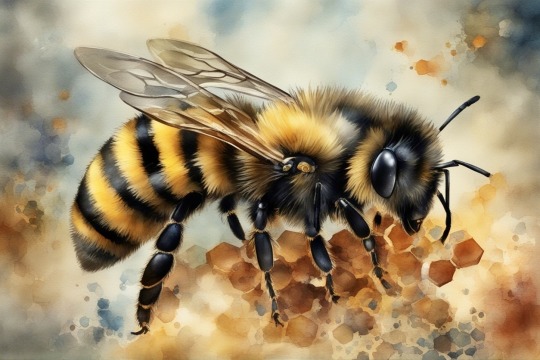
#ko-fi#kofi#geeknik#nostr#art#blog#writing#bees#biohybrid#explosives#detection#semiconductor#organic#honeybee#technology#nature
2 notes
·
View notes